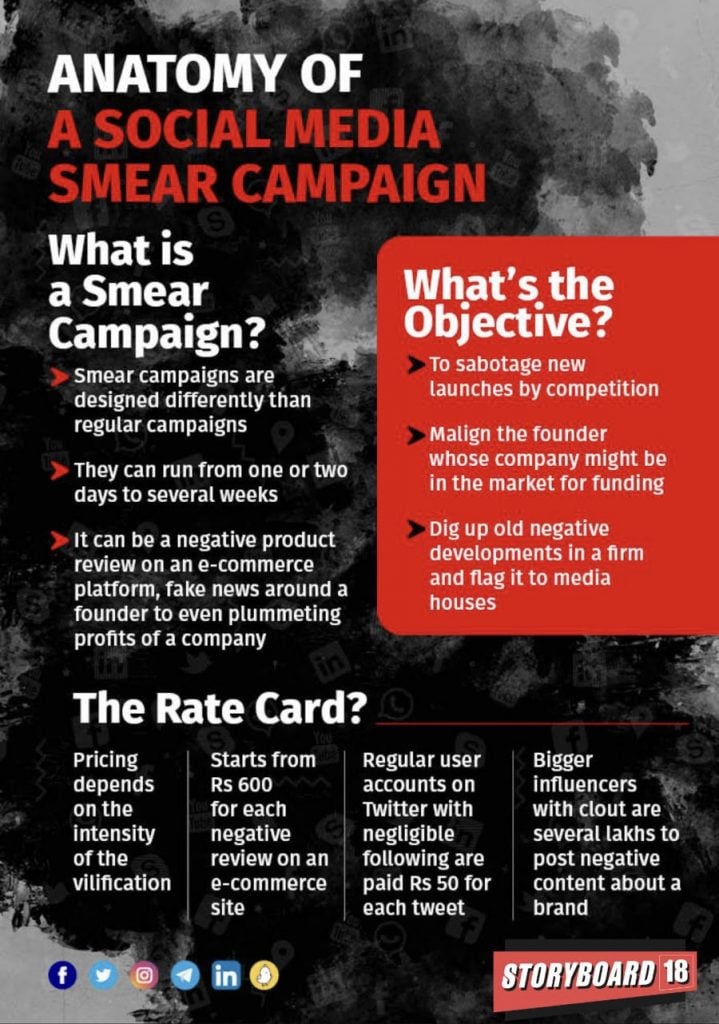There seems to be a new trend that has caught on in the influencer community. However, marketers, agencies and brands aren’t pleased with this development. Smear campaigns are becoming strong tools for those with vested interests looking to defame a brand or a company. However, before we get into smear campaigns, it is important to understand the meaning of another trendy word on the internet – de-influencing. The concept of de-influencing isn’t exactly new. De-influencers are in vogue nevertheless. So, what exactly is de-influencing and what are de-influencers?
The overall spending power of a consumer has dropped. Pricey products and prestigious brands, though aspirational, are difficult to actually acquire. Thus, de-influencers suggest their audiences to go for cheaper and value for money alternatives even if they are duplicates of the original. Unfortunately, one of the plagues of the influencer community is inauthenticity. It defeats the purpose of influencer-led marketing. With de-influencers being candid and honest with their followers, this trend is an opportunity to build trust and win over a larger audience.
The question that lies is, does de-influencing impact sales of major brands? Many experts of branding and marketing actually believe that de-influencing can help improve a brand’s products and marketing strategies. They see de-influencing as a self-regulating exercise done by influencers. Having said that, de-influencing doesn’t exist without cynicism. Many influencers believe that by influencing someone to buy something over the other, they are still influencing their audience and propelling consumerism.
Read More: Explained: What is ‘de-influencing’ and how does it work?
What is a smear campaign?
Coming back to smear campaigns, there is an increase in the number of these being witnessed on social media. Smear campaigns are targeted hits on brands and its founders. Anything from an uncalled for negative review of a product to fake news about the company’s founder and/or about a drop in profits of a company can be categorised as a smear campaign. However, these hits aren’t random or made just for fun like in the case of trolls. The primary objective of a smear campaign is to sabotage any developments being made in a company.
Smear campaigns are usually done via different media. It could be through a paid news article in a media publication or even paying an influencer to talk negatively about a brand and its products. Moreover, there isn’t a single person masterminding a smear campaign. It involves multiple parties and cannot be traced back to a single person. It is too much of an effort to go through for any troll to smear a brand’s image just for the heck of it.
How do they work?
In June last year, Meesho sent out legal notices to select influencers and people in contact with them who were allegedly posting negative content about the company and its investors. Multiple Twitter users too came out to mention that they were approached to post negative content about Meesho.
Travel company EaseMyTrip too revealed that several Twitter accounts were commenting on the company’s profile, accusing them of stealing money from their consumers. Even VC firm Sequoia Capital that backs companies such as Byju’s, Blinkit and Bira has been a victim of a smear campaign.
These campaigns run longer than regular campaigns, from a few days to multiple weeks. What decides the duration of a smear campaign is the topic. If brand image needs to be targeted, the campaign may go on for several weeks. If its the founder, it may be a few days. Similarly, pricing too is determined by intensity of topic. It can range from Rs. 50 for a tweet to Rs. 600 for a negative review on a website to even several lakhs paid to an influencer for posting negative content about the brand.

In a previous interview by Storyboard18, Shradha Agarwal, CEO and co-founder, Grapes Digital said, “Smear campaigns are usually done in volumes and by micro influencers/nano influencers and usually not done by big influencers. College kids and Twitter accounts do retweets in bulk and forcefully trend a topic. WhatsApp too is the new hot platform for smear campaigns and sharing screenshots about a brand or founder.”
Any social platform can be used extensively to promote a smear campaign. Even meme pages that are intended for jokes and humour are not left to spare. According to Pratik Gupta, co-founder, Zoo Media, which owns creative digital agency FoxyMoron, “Meme pages are another way to run a smear campaign or malign a brand. For instance, there were memes around how an Oppo phone owner is touted as a beggar. In such instances, although it is being said in fun and jest but it does create a perception. Meme pages are massive places where smear campaigns are run.”
So how do you identify a smear campaign? You require a keen eye to distinguish it. A sudden increase in the mention of brands out of the blue is the best sign to identify a smear campaign.
Are smear campaigns the same as ambush marketing?
Are smear campaigns similar to ambush marketing? Absolutely not. Smear campaigns are systematic campaigns designed to intentionally vilify a brand. Ambush campaigns on the other hand, is a fair marketing exercise where brands take friendly digs on their competition. For example, Coke and Pepsi, McDonald’s and Burger King being eternal rivals and hijacking each others marketing campaigns. Smear campaigns need to be taken seriously as influencers have more sway over their audience now than ever before. Every comment, tweet, reel, meme or WhatsApp forward has the power to alter the destiny of a brand or company.
